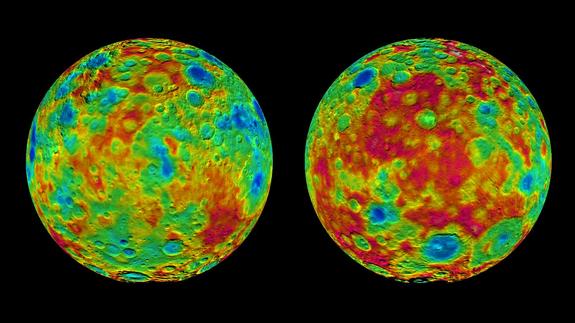Here are two of the new names with geographic descriptions as well as historical reference:
Occator: The crater with Ceres’ mysterious bright spots is 60 miles (90 km) across and 2 miles (4 km) deep. It is named for the Roman god of harrowing, which is a method of levelling soil. New researchhas revealed that the bright spots of Occator release gas to the surface, creating a localized atmosphere within the crater.
Haulani: Also known as “Spot 1,” Haulani is a small, bright crater that’s 20 miles (30 km) across. It’s named after a Hawaiian plant goddess, and seems to be colder than the surrounding area.
We’re anxiously awaiting more info from new pictures that should be coming in.
And this scientist had this theory regarding the spots:
According to Christopher Russell of the University of California at Los Angeles, the Dawn mission’s principal investigator, the team is “shying away from there being ice on the surface.”
“The general consensus on the team right now is that water is definitely a factor on Ceres, but that the spots themselves are more likely to be just highly reflective salt, rather than water,” Russell told The Post.
Below is a brief video showing the bright spots on Ceres.
thanks to space.com for the great info
thanks to washington post for the great info

https://m.youtube.com/watch?v=8oDUUXzDAlQ